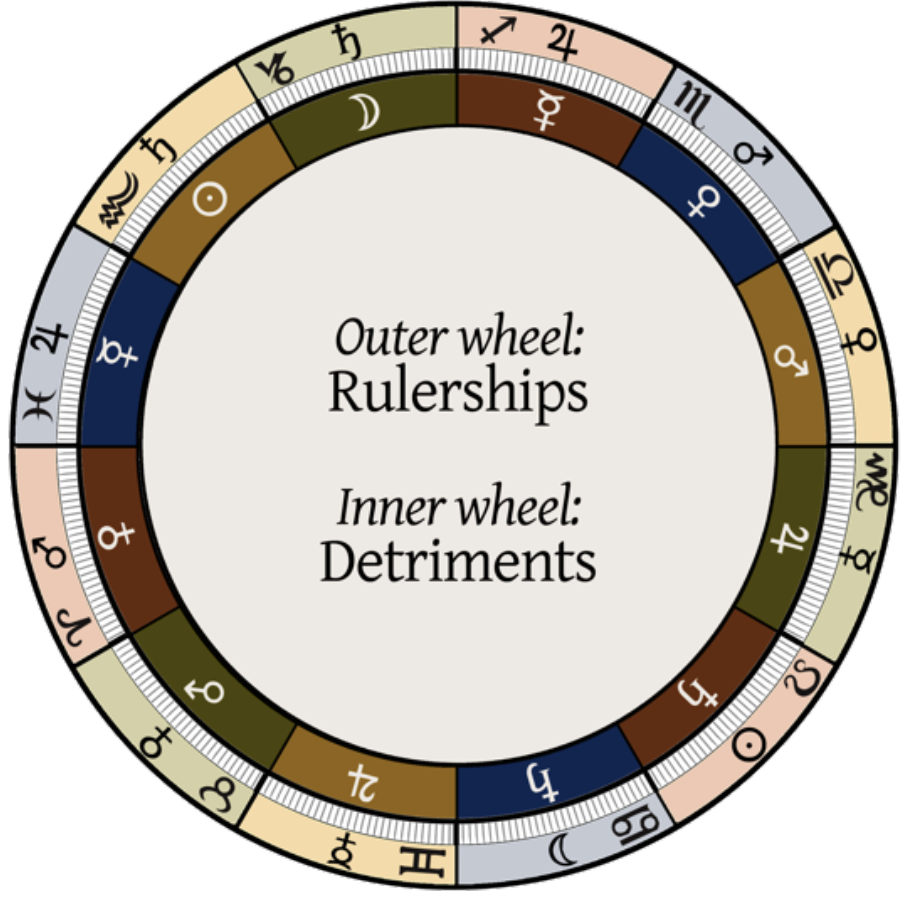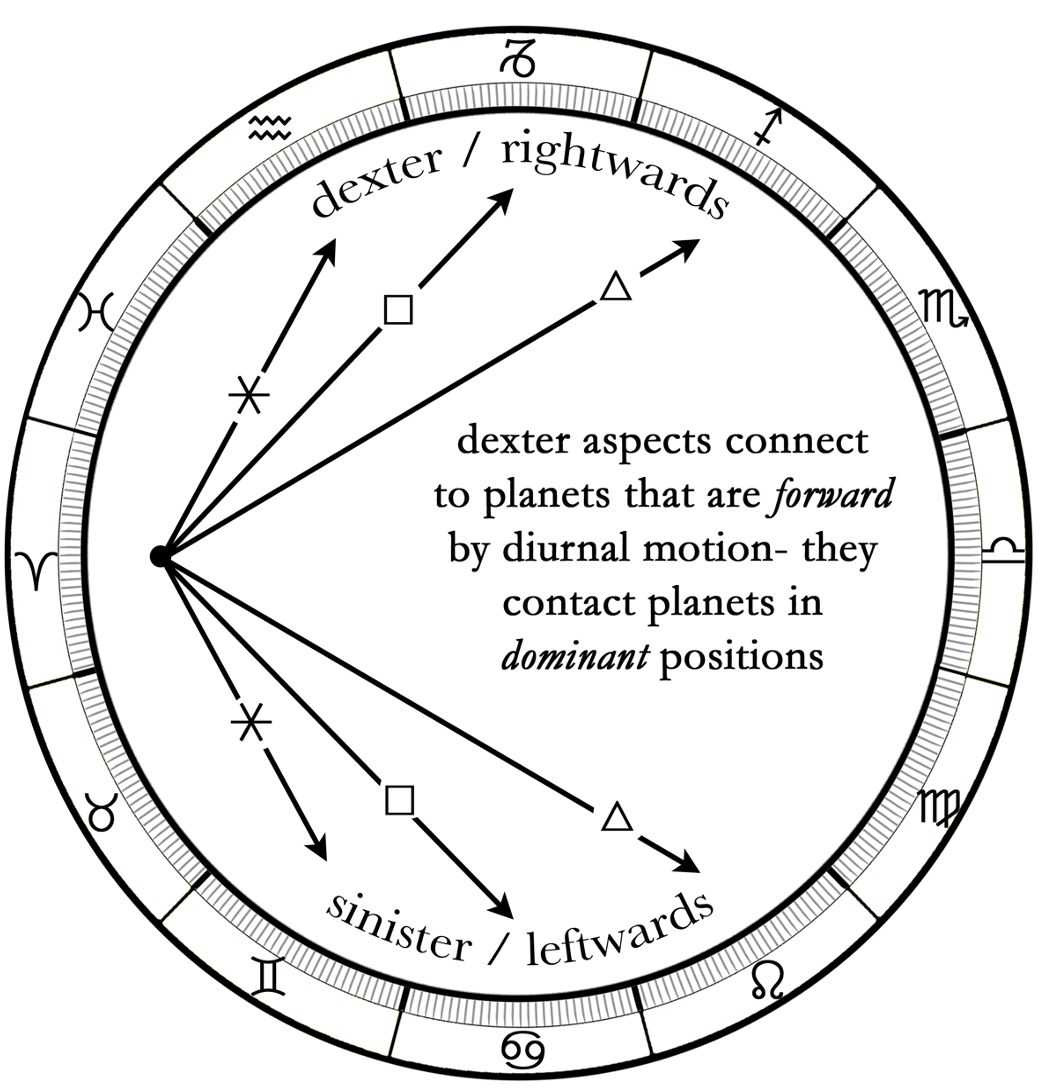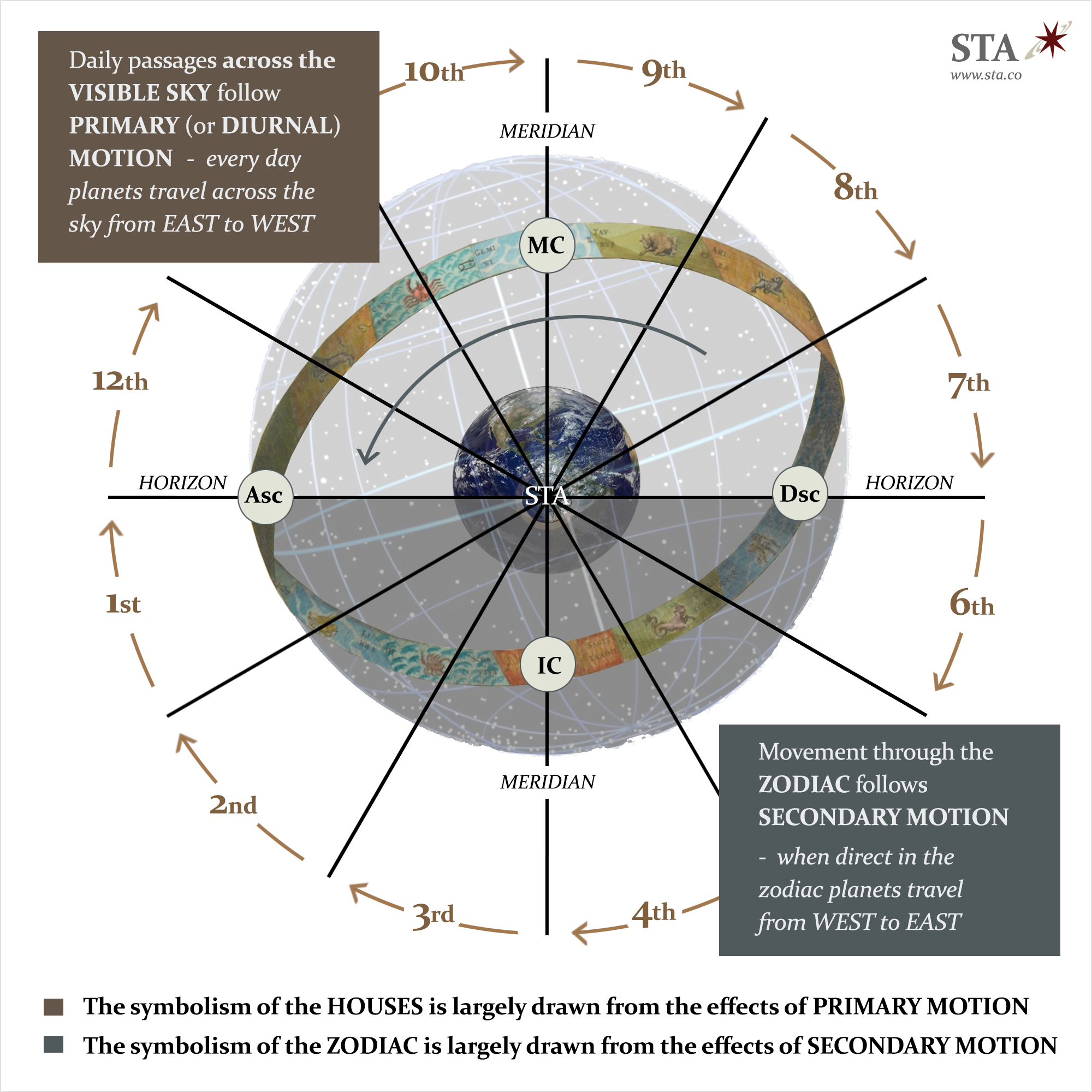Glossary of terms
Special | A | B | C | D | E | F | G | H | I | J | K | L | M | N | O | P | Q | R | S | T | U | V | W | X | Y | Z | ALL
D |
|---|
DecansAlso called decanates: Egyptian term for the faces, means
‘tenths’ because each decan covers 10°. See ‘faces’. | |
DecliningThis is another term for setting, or falling away from the angles. | |
DecumbitureName of the branch of astrology that examines a chart drawn
for the time of someone falling sick or becoming aware of an illness. Study of
that chart allows examination of the root causes of the illness, the best
approach and times for treatment, and a prognostication of recovery or relapse.
(From decumbere, ‘to lie down’). | |
Derived housesSee ‘turning the chart’. | |
DescendantThe degree of the ecliptic (zodiac) that meets
the western horizon, and which denotes the 7th house cusp. So called because planets at this point
descend beneath the horizon and are no longer visible to the naked eye. | |
DetrimentA planet in detriment is in a sign opposite its sign of rulership. This is considered a debility or weakness for the planet.  | |
Dexter/sinister Dexter literally means ‘of the right’ and refers
to something on the right hand side; sinister means ‘of the left’ and refers to
something on the left hand side. According to Pythagorean principles, movement
towards the right is more natural and direct than movement towards the left
(hence the term ‘righteous’ or the negative undertones given to the word
‘sinister’ generally). This partly recognises the influence of diurnal motion
(by which planets move from left to right), and the fact that in any cycle
between two planets, the faster moving planet will cast its aspect to the other
on the right hand side whilst the cycle is waxing (suggesting growth and
vigour), and to the left hand side when the cycle is waning (suggesting
retirement and weakness). A ‘dexter aspect’ is therefore said to be more
forceful and effective than a sinister one. Dexter aspects are formed in
keeping with diurnal revolution (for example, a planet in Pisces applying to a
sextile of a planet in Capricorn); sinister aspects are formed against diurnal
revolution (for example, a planet in Pisces making a sextile to a planet in Taurus). | |
Dignities & debilitiesFactors that increase a planet’s strength are
called dignities; those that weaken it, debilities. These are termed ‘essential’
when they rely upon zodiacal position; and ‘accidental’ if they rely upon
anything else. Thus the advantage offered to a planet by being in its own sign
or exaltation is an essential dignity, the disadvantage of being in its sign of
detriment or fall is an essential debility; but combustion, aspectual
connections and matters of angularity or house position are accidental
dignities or debilities. | |
DispositionThe overall condition, influence, or virtue of a
planet once all matters of dignity and debility have been judged. To commit disposition means to pass
influence to another planet by aspect or reception. | |
DispositorA planet which rules another because the other is in one of its areas of essential dignity. For example, Venus, the planetary ruler of Taurus, is the dispositor of any planet in Taurus: that planet is said to be diposed by Venus by sign. Planets can also be disposed by the lesser dignities (see essential dignity). The general condition of the dispositor has some bearing on the strength of the planet disposed by it. | |
Diurnal hemisphereThis is the hemisphere above the horizon, comprising the 7th,
8th, 9th, 10th, 11th and 12th houses. | |
Diurnal motion/revolutionApparent motion of the heavens which carries
planets from the eastern horizon, up to the midheaven, and down towards the
west, as perceived by the senses from our seemingly stationary viewpoint. Also
known as ‘primary motion’.
| |
Diurnal sectSee ‘sect’. | |
Diurnal/nocturnalDiurnal means ‘of the quality of the day’;
nocturnal means ‘of the quality of the night’. Diurnal energies relate to
masculinity and the solar principle, being active, direct and expressive,
whilst nocturnal energies relate to femininity and the lunar principle, being
responsive, indirect, and impressive. Yin and Yang are analogous oriental
terms. The characteristics of diurnal and nocturnal influences infiltrate many
areas of astrological philosophy, from the alternation of the signs (usually
referred to as masculine and feminine), to the assignation of planetary
rulerships over the signs. Apart from the Sun and Moon each planet has two
rulerships – one diurnal, one nocturnal – to recognise their expression in
these altered states (for example, Mars rules Aries, its diurnal ‘house’, and
Scorpio, its nocturnal ‘house’). | |
Diurnal/nocturnal chartsA ‘diurnal chart’ is one
where the Sun is located in the diurnal hemisphere: being above the horizon it
denotes someone born in the day time and therefore belonging to the diurnal
sect. A ‘nocturnal chart’ is one where the Sun is located in the nocturnal
hemisphere: being beneath the horizon it denotes someone born at night and
therefore belonging to the nocturnal sect. Many traditional techniques (parts,
firdar, triplicites, etc.) require knowledge of whether the chart is diurnal
or nocturnal to establish correct formulas and dignity rulerships. | |
DomicileTraditional term meaning ‘place of residence’, so
usually referring to a planet being in its own sign of rulership, i.e., Venus is
in its domicile when in Taurus or Libra. | |
DominionAnother term for ‘rulership’. | |
Dorotheus - astrologer (1st century CE)Author of a long, influential astrological verse known as Carmen Astrologicum (Latin: ‘Song of Astrology’). Only fragments remain in Greek, but it was widely reproduced and circulated across many cultures and epochs (the English translation made by David Pingree in 1976 was the result of Greek text being translated into Persian, then into Arabic, then into English). It contains five books (so is sometimes called the Pentateuch: Greek: ‘Five Scrolls’), the first four dealing with natal astrology, the fifth being notable for its lengthy account of how to judge ‘Interrogations’ (i.e., questions). Authenticated Greek passages prove this work to be a source of many of the rules for judging horaries that appear in later works such as Lilly’s. | ||

